Table of contents
Wild garlic ( Allium ursinum), also known as wild garlic, forest garlic or dog garlic, is suitable raw or cooked for refining various dishes and as an ingredient in salads. Organic ?
Use in the kitchen
Can you eat wild garlic raw? Wild garlic is very popular raw as a vegetable, spice and medicinal plant. The entire plant is edible raw, but the leaves are mainly used. Small, young leaves are very tender. When the plant is flowering, the leaves are firmer.
Wild garlic preparation: In spring cooking, wild garlic can be prepared as a soup and enjoyed in sauces, in salads, as a spice in dips, in raw food recipes, cream cheese, butter, as pesto or kimchi (gimchi). Wild garlic can also be used raw as a substitute for chives or onion greens.
In addition to the leaves, the delicate flower buds (wild garlic buds) and later the flowers can be eaten raw or sprinkled decoratively over salads, desserts and breads. Pickled in agave syrup, the aromatic sweetness can be used for dips and sauces. The tender and very intense bulbs (root) are also suitable for seasoning in the kitchen.
Does wild garlic have to be cooked? If you heat the wild garlic leaves, the sulphurous substances change and they lose their special garlic-like taste. That's why wild garlic is best enjoyed fresh and raw, chopped up and mixed into dishes. Steamed or cooked, wild garlic tastes particularly good as ' wild garlic spinach ' or as a healthy flavour booster in pasta, e.g. in wild garlic gnocchi.
Vegan recipe for wild garlic pesto as a raw food
ingredient: 200 g wild garlic (raw, freshly picked or organic), 50 g pine nuts, the juice of half a lemon, 4 teaspoons agave syrup, salt andpepper, approx. 150 ml salad oil (e.g. rapeseed oil, cold-pressed).
Preparation: Puree all ingredients with a hand blender (magic wand) or high-performance blender to a creamy vegan pesto and pour into glasses or enjoy fresh.
Vegan recipe for wild garlic falafel
Ingredients: 100 g wild garlic (raw, organic), 300 ml cooked chickpeas, ½ teaspoon cumin, ½ teaspoon turmeric, salt, pepper, a few tablespoons wholemeal flour, frying oil (e.g. rapeseed oil, refined).
Preparation: Puree the cooked chickpeas with the wild garlic, spices, salt and pepper. Gradually stir in a few tablespoons of wholemeal flour with the help of a wooden spoon until the mixture can be formed into balls with wet hands. Gently fry the vegan falafel in a heat-stable frying oil until golden brown.
Vegan recipes with fresh wild garlic (raw) can be found under the note: " Recipes that have the most of this ingredient ".
| Not only vegans or vegetarians should read this: Vegans often eat unhealthily. Avoidable nutritional mistakes. |
Purchasing - Storage
During the wild garlic season in spring, you can find freshly packaged wild garlic at major retailers such as Coop, Migros, Denner, Volg, Spar, Aldi, Lidl, Rewe, Billa, Edeka or Hofer. Prefer wild garlic from controlled organic cultivation, which you can buy in organic shops. You can also get fresh wild garlic in bunches at weekly markets. However, wild garlic that you buy is often also collected in the wild. Controlled cultivation of wild garlic is a good option for niche production in order to avoid the risk of confusion and the associated poisoning.
The availability of wild garlic varies depending on the size of the store, catchment area, etc. If you are interested, click on our recorded food prices for the DA-CH countries (above under the ingredient image). There you will find current prices from various supermarkets and their price development.
Storage tips
Wild garlic can only be stored in the fridge for a few days. The trick of putting the wild garlic in a freezer bag with a few drops of water and then sealing it and putting it in the fridge is particularly suitable for this.
Can you dry wild garlic? It is possible to dry wild garlic, but this will result in a loss of many of the aromatic substances.
There are various methods to preserve the taste of wild garlic better than drying. These include further processing of fresh wild garlic in the form of wild garlic pesto, wild garlic puree, wild garlic butter, mother tincture or even wild garlic oil. Wild garlic kimchi can be kept for many months due to lactic acid fermentation. If stored appropriately, all of these products can be preserved for months without any major loss of quality.
Freezing wild garlic: For short-term storage of fresh leaves, it is worth collecting them and washing them carefully (avoiding bruises!) and then either freezing them whole or chopping them up for later use in soups and sauces.
Wild wild
garlic can be found almost all over Europe - often in damp alluvial forests, beech, deciduous and mixed forests, but also in hedges. 1 After finding wild garlic fields, you should make sure that the area is not contaminated by dogs or in any other way.
Collection time - season for leaves is between March and May. For flowers often until June. The bulbs can be dug up in autumn and used as well. 1,2 Wild garlic leaves are delicate and sensitive to pressure and should be transported home, eg after collection, in an inflated plastic bag with a very small amount of water in it.
Ingredients - Nutritional values - Calories
Fresh wild garlic has an energy content of 23 kcal/100g. The carbohydrate content is 5.1 g/100g, of which 2.2 g isfiber. Proteins (0.9 g/100g) and fat (0.3 g/100g) are hardly contained.
With 150 mg of vitamin C per 100 g 12, raw wild garlic has about three times as much as a lemon (51 mg/100g is about 63% of the daily requirement). 6 Ground elder contains a similar amount at 140 mg/100g and nettle leaves have a very high value at 333 mg/100g.
Wild garlic contains 200 µg/100g 12 (25% of the daily requirement) of vitamin A, similar to borage (210 µg/100g) and more than aronia berries (192 µg/100g), which are often referred to as superfoods. The 4300 µg/100g in lemon verbena exceeds all other herbs. 6
Even iron is found in wild garlic at 2.9 mg (21% of the daily requirement), 12 which corresponds to a similar content to spinach. Wild mallow has an outstanding value of the trace element at 78 mg/100g. 6
In addition to the macro and micronutrients mentioned, it also contains secondary plant substances such as leek oil, flavonoids (prostaglandins A, B and F), biocatalysts and fructosans. 2 Fresh leaves contain around 0.005% allicin, 0.5% alliin, 0.07% methyl-L-cysteine sulfoxide and leaf-specific lectins and are very low in calories at 23 kcal per 100 g.
The complete ingredients of fresh wild garlic (raw), the coverage of the daily requirement and comparison values with other ingredients can be found in our nutrient tables. In the article Nutrients explained you will get a detailed insight into the topic.
Effects on health
Wild garlic has a similarly positive effect on the human body as garlic. It is used in folk medicine in particular to treat gastrointestinal complaints such as bloating and flatulence, it has a blood pressure-lowering effect and is effective against arteriosclerosis. 5,7 The use of wild garlic in healthy and fresh cooking is highly recommended.
How much wild garlic can you eat? We are not aware of any recommendations for maximum dosages. If you are sensitive to garlic, you should also be careful with your wild garlic dosage.
Dangers - Intolerances - Side effects
When collecting wild animals, there is a risk of transmitting eggs of the dangerous small fox tapeworm, which are mainly left behind by red foxes, but also by some cats and dogs. The eggs are found in the animals' feces and enter the human body when wild garlic leaves are eaten, for example. This can lead to a dangerous, sometimes fatal liver disease (alveolar echinococcosis).
Danger of confusion
If you are not aware of this, there is a particular danger of poisoning or confusion with the poisonous leaves of the autumn crocus ( Colchicum autumnale). All parts of the autumn crocus contain a known cell poison ("colch...") which can withstand high temperatures. If symptoms appear after 6-12 hours, such as burning and scratching in the throat, difficulty swallowing, shortness of breath, vomiting and diarrhea combined with severe fluid loss, we recommend that you see a doctor. If you eat large quantities (in the case of the leaves, about a small portion of salad) or misuse parts of the plant, death can occur if the symptoms are not treated. Symptoms of poisoning can also occur with smaller amounts. 3 The active ingredient is also used in medications used to treat gout. In adults, acute symptoms of poisoning occur from 20 mg (of the active ingredient), so it is recommended not to exceed the maximum dose of 8 mg within 24 hours or 12 mg per gout attack. 9
It is just as easy to confuse wild garlic leaves with the leaves of the lily of the valley ( Convallaria majalis). 1,3 The poisoning manifests itself with severe upper abdominal pain and rarely with cardiotoxic problems. To avoid confusion, it is important to make sure that the leaves of the lily of the valley "twist" out of the soil. They are not as delicate and fine when they are young.
There is also confusion with the mostly unspotted leaves of younger plants of the spotted arum ( Arum maculatum). The leaves contain calcium oxalate raphides, which acutely irritate the oral mucosa, which is why you automatically don't eat a lot of them. However, if you eat about two leaves, the oral mucosa swells, vomiting and diarrhea occur. If the plant sap comes into contact with the skin, redness and blistering occur. Drink plenty of water immediately and rinse the skin well under running water. 3
How do you distinguish wild garlic from lily of the valley, autumn crocus or spotted arum? It is helpful to rub the leaves between your fingers to ensure the typical garlic scent. 2
Folk medicine - naturopathy
In naturopathy, the wild garlic plant stimulates the metabolism and, due to its predominantly sulphur-containing essential oils, it is used in addition to the above-mentioned points against respiratory diseases.
Ecological footprint - animal welfare
We did not find any precise figures on the CO 2 footprint of wild garlic. Fresh chives have a footprint of 0.37 kg CO 2 eq/kg and garlic 1.13 kg CO 2 eq/kg. 13
Since wild garlic can be found regionally throughout Europe during its peak season in spring, you should pay attention to regionality when buying to avoid unnecessary transport routes. In addition, it is ideal to buy loose leaves or collect the wild garlic yourself. This means that no unnecessary plastic packaging is used, the production and disposal of which requires raw materials and energy, which increases the ecological footprint of wild garlic. When collecting, it is best to only pick as much as you can eat. If you also make sure to only take one leaf per plant, the plant can then continue to develop. 10 This is of great importance because in some regions, for example northern Germany, wild garlic is listed on the Red List as "Endangered". 11
For detailed explanations of various sustainability indicators (such as ecological footprint, CO2 footprint, water footprint), see our article: What does the ecological footprint mean?
Animal protection - species protection
Like all large-flowered allium species, the wild garlic plant is a remarkable food plant for bees, hoverflies and bumblebees. Since the flowering period falls in the spring months of April to June, wild garlic is considered a spring nectar plant. The term nectar refers to the entire range of nectar, honeydew and pollen available to insects. While the pollen value of wild garlic is medium, the nectar value is good. Chives, onions and various ornamental allium species are recommended as additional bee pasture. 4 Allium ursinum is also a nectar plant for butterflies, especially in June.
Worldwide occurrence - cultivation
Wild garlic grows almost throughout Europe and thrives in the foothills of the Alps at altitudes of up to 1900 m. Wild garlic spreads through the adhesion of clay soil to animal feet, which also explains its frequent patchy occurrence. 8
Cultivation - Harvest
Can you plant wild garlic in the garden? Wild garlic can be cultivated in the garden under bushes. The plant can multiply efficiently through ants. 4 In the garden, wild garlic plants love a moist, partially shaded location, ideally under deciduous trees. Slightly sunny locations are possible, but the soil must always be moist. As cold germinators, the seeds must survive a period of frost before they germinate.
Further information
Wild garlic ( Allium ursinum) is a plant species from the genus Allium and is closely related to chives, onions and garlic.
Alternative names Common names
for wild garlic include bear's garlic, garlic spinach, wild garlic, forest garlic, rinse garlic, dog garlic, witch's onion, gypsy garlic, ramsen or forest lord. Common misspellings are: Berlauch, Beerlauch.
In English, the wild garlic plant is known as ramson, ramsons, wild garlic or wood garlic.
Bibliography - 13 Sources (Link to the evidence)
| 1. | Mabey R. Essbar: Wildpflanzen, Pilze, Muscheln für die Naturküche. München: Haupt Berne. 2013. |
| 2. | Pahlow M. Das grosse Buch der Heilpflanzen: Gesund durch die Heilkräfte der Natur. München: Gräfe und Unzer Verlag. 2013. |
| 3. | Pharmazeutische-zeitung de: Schellerer S. Pflücken mit Tücken. Pharmazeutische Zeitung online. 2005;19. |
| 4. | Kremer, Bruno P. Mein Garten – Ein Bienenparadies. 2. Auflage. Bern; 2018. Haupt Verlag. |
| 5. | Gođevac D, Vujisić L., Mojović M et al. Evaluation of antioxidant capacity of Allium ursinum L. volatile oil and its effect on membrane fluidity. Food Chemistry. 2008;107(4): 1692–1700. |
| 6. | USDA United States Department of Agriculture. |
| 7. | Sobolewska D, Podolak I, Makowska-Wąs J. Allium ursinum: botanical, phytochemical and pharmacological overview. Phytochemistry Reviews. 2013;14(1), 81–97. |
| 8. | Ellenberg H. Vegetation Mitteleuropas mit den Alpen in ökologischer Sicht. 4., verbesserte Auflage. Ulmer: Stuttgart 1986, 125–129. |
| 9. | Aerzteblatt de: "Aus der UAW-Datenbank": Akzidentelle Überdosierung von "Colch..." mit Todesfolge. Dtsch Arztebl 2017; 114(3): A-96. |
| 10. | NABU. Leckerer Bärlauch hat giftige Doppelgänger. Verwechslungsgefahr mit Maiglöckchen und Herbstzeitlose. |
| 11. | Bund Friends of the earth Germany. Ökotipp: Gemüse der Saison – Bärlauch im März. 2023. |
| 12. | DEBInet Deutsches Ernährungsberatungs- & -informationsnetz. Nährwertangaben aus dem Bundeslebensmittelschlüssel 3.02. Bärlauch, roh. |
| 13. | Concito. The big climate database. Version 1.1. 2024. |

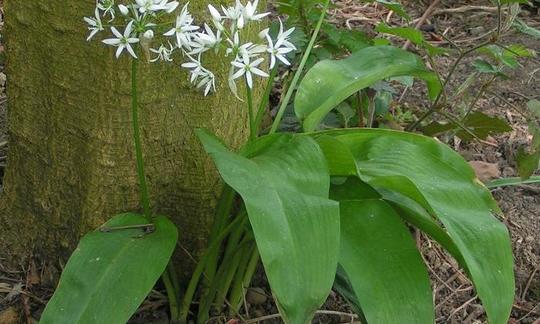

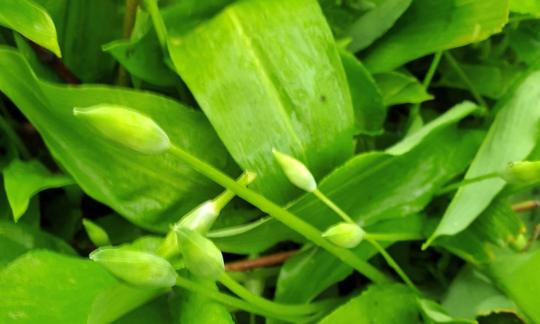




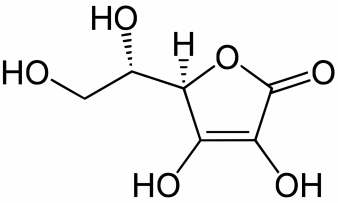
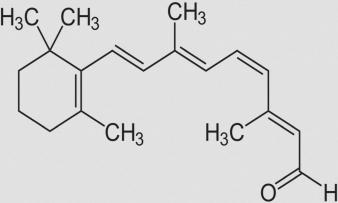

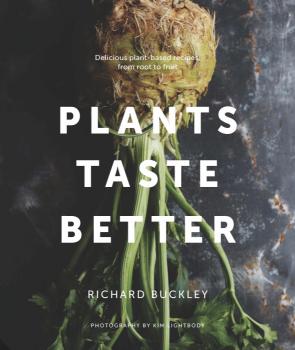

Comments